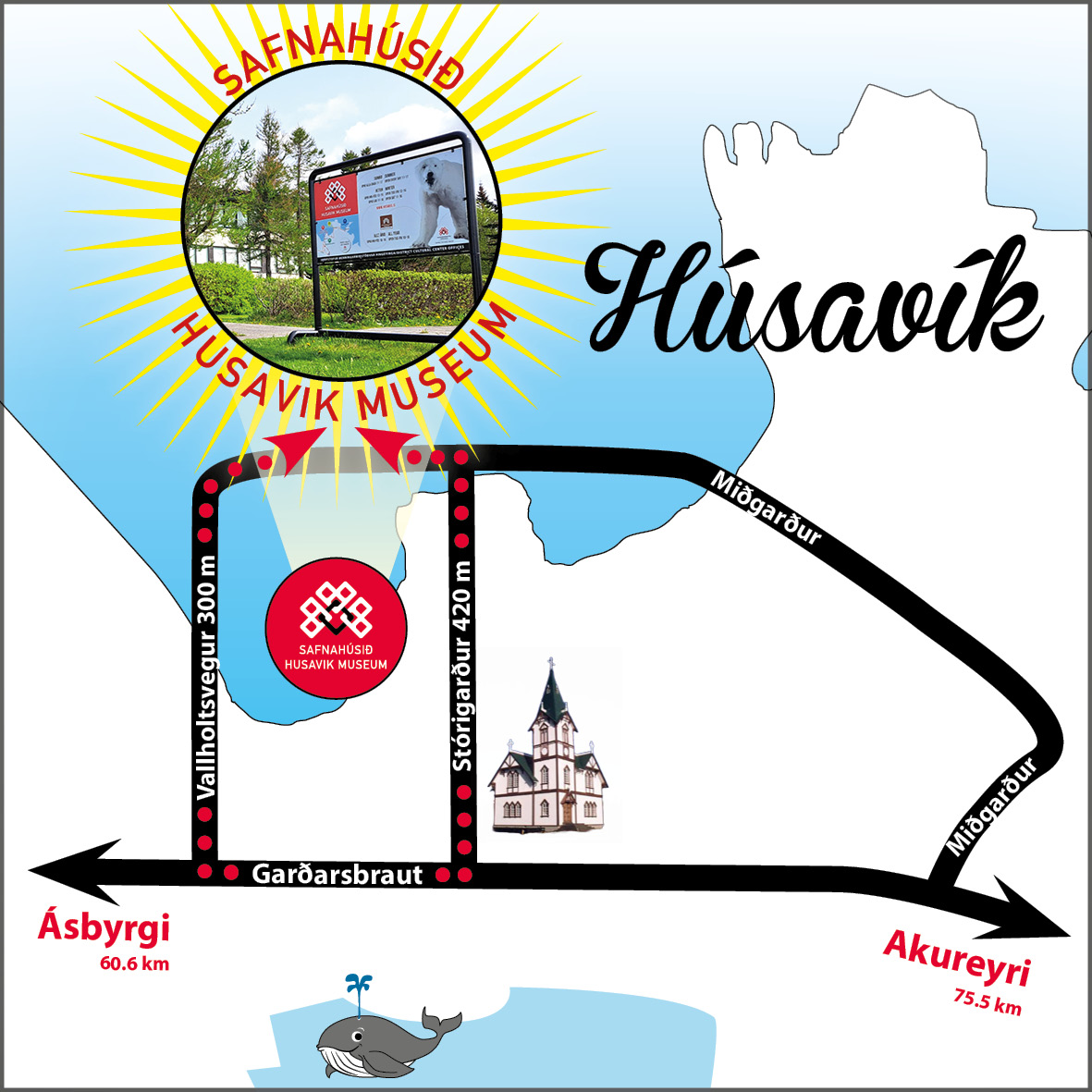

Daily Life and Nature - 100 Years in Þingeyjarsýslur
Daily Life and Nature – 100 Years in Þingeyjar Counties is one of the permanent exhibitions at the Husavik Museum. It explores the connection between man and nature in the period 1850-1950. Contemporary personal accounts by local people guide guests through the exhibition, where man-made artefacts are displayed alongside natural objects. The exhibition also houses a space where guests can learn about the history of the Cooperative Society and trading companies since the first one in Iceland was established in this area.
A complimentary audio guide in English is available to accompany visitors through this exhibition.
Photos: Daily Life and Nature
Maritime Museum
The other permanent exhibition in the Husavik Museum is the Maritime Museum which provides an insight into the evolution of fishing and boat building in the area, from the time of the rowboat and through to the age of the motorboat. Along with a myriad of artifacts a variety of boats are on exhibit, many of which were built in Húsavík, and emphasizes how people utilized the riches of the ocean and the beaches in order to survive. It is also home to the largest polar bear (Ursus Maritimus) ever to have drifted ashore in Iceland, on the small island of Grimsey. Grimsey is situated north of Húsavík, sitting at the only point in Iceland that crosses the Arctic Circle, at 66°N latitude.
Photos: Maritime Museum
District Art Collection
The Art Collection currently consists of almost nineteen hundred works and has therefore grown enormously since its foundation on April 1, 1978, when the museum’s founding donation consisted of 77 works by 30 artists. The foundation was not least thanks to Sigurður P. Björnsson, who focused on collecting paintings for donation to the Collection, especially works by local artists. The donation therefore mainly consisted of works by artists with connections to the two Þingeyjar Counties.
The District Art Collection began holding exhibitions in 1980 at the Husavik Museum, which was inaugurated in the same year. The Collection is now run by the District Cultural Center and its portfolio is mostly preserved in the art storage space on the 3rd floor of the Husavik Museum. However, a few works are on loan with the municipalities that run the Husavik Museum. In the museum, there is an exhibition space simply called the Painting Hall, where exhibitions are held every year with a primary focus on visual arts.
One of the most important parts of the founding donation is 27 works by the artist Valtýr Pétursson (1919–1988), who was born and raised in the village Grenivík in South Þingeyjar County, and who presented them to the Collection himself. Among other important works that were a part of the founding donation of the museum are three paintings by Arngrímur the Painter (Arngrímur Gíslason, 1829–1927) who was also a native of the region, born in Skörð in Reykjahverfi. Arngrímur’s works are remarkable records of the rural culture of his time, of a type more commonly found in cultural museums than in art collections (most of his works that are not privately owned are stored in the National Museum of Iceland), although they also have great significance in the history of Icelandic visual art.
The District Art Collection has regularly received generous gifts since its establishment, both from locals and outsiders. Special mention may be made of the recent donation in 2022 of two unique works by Jón Engilberts, from Íslandsbanki’s collection. In addition, the Collection has purchased various works throughout the years and there have regularly been donations by both Icelandic and international artists of their own works. All works belonging to the Collection are registered with the District Cultural Center.
Photos: District Art Collection
District Natural History Collection
The District´s Natural History Collection was founded in 1966 and consists of a large collection of birds and wild terrestrial mammals found in the Þingeyjar Counties, as well as Icelandic farm animals. The museum also holds a collection of marine mammals such as seals found in Icelandic waters, taxidermied fish, a collection of crabs and an interesting stone collection.
Two private collections also belong to the Natural History Collection. One is the shell collection of Jóhannes Björnsson (1907–1998), a farmer in Ytri-Tunga in Tjörnes, which contains Icelandic shellfish and a unique collection of marine molluscs, a collection of marine gastropods that includes 179 species that have been found in Icelandic waters (plus 93 other species from the North Atlantic) and 26 species of terrestrial gastropods. It also contains many species of freshwater snails, bivalves, scaphopods, chitons, barnacles and brachiopods. The other private museum is the herbarium of the botanist and farmer Helgi Jónasson (1887–1972) from Gvendarstaðir in Kaldakinn, which was previously owned by Akureyri Natural History Museum, but was donated to the District Natural History Collection, run by the District Cultural Center, at the opening of the Husavik Museum on May 24, 1980. The herbarium consists of around 300 species of plants that Helgi collected over an extended period of time, most of which are from Þingeyjar Counties.
Finally, the most famous exhibit of the museum is a taxidermized polar bear – the Grímsey Bear – which was killed in Grímsey in the winter of 1969 and draws significant attention. He is part of an exhibition at the Maritime Museum of Þingeyingar, but there you can also find various items from the Natural History Museum mixed with maritime artifacts that tell the story of seafaring in Húsavík.
The artefacts not currently on display are safely stored in the archives of the Husavik Museum, awaiting future exhibitions.
Photos: District Natural History Collection

